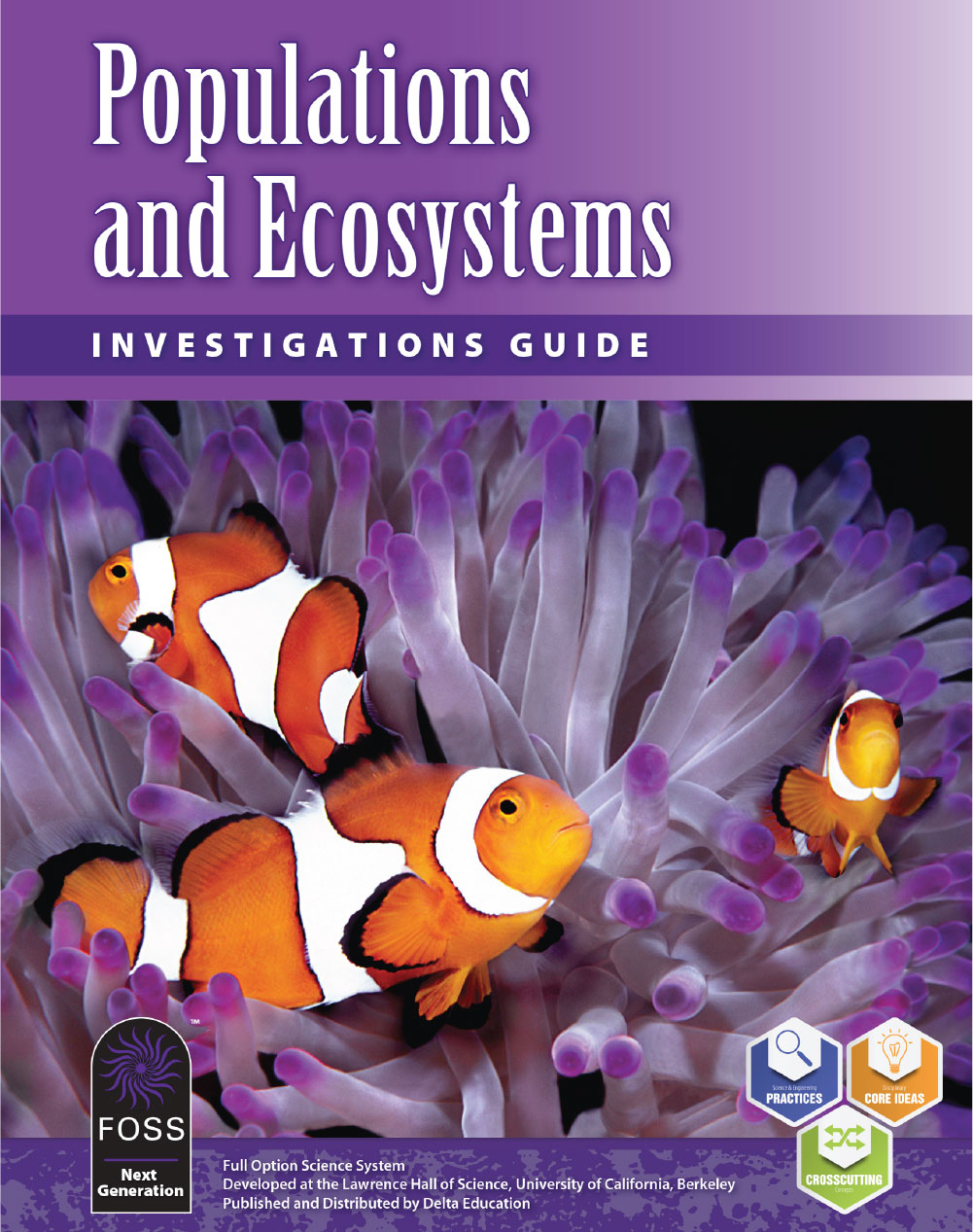FOSS Next Generation Populations and Ecosystems
Grades 6-8

All humans live within ecosystems—the largest organizational unit of life on Earth, defined by a physical environment and the organisms that live there. In the Populations and Ecosystems Course, students learn that every organism has a role to play in its ecosystem. To understand how ecosystems work and what they need to remain healthy, students explore how changes to one part of the ecosystem affect others.
Investigation 1: Milkweed Bugs
Raise milkweed bugs in a supportive habitat to study reproductive biology and population dynamics.
Investigation 2: Sorting Out Life
Introduce some of the big organizing concepts in ecology, and develop the vocabulary associated with those concepts.
Investigation 3: Mono Lake
Study the functional roles of populations in an ecosystem to construct a food web.
Investigation 4: Mini-Ecosystems
Construct aquatic and terrestrial ecosystems, then observe, describe, and monitor changes in biotic and abiotic factors.
Investigation 5: Producers
Investigate the effect of light on photosynthesis. Identify producer roles, create models, and measure food energy.
Investigation 6: Following the Energy
Learn how energy provided by producers is used by all organisms and how it moves from one trophic level to another.
Investigation 7: Population Size
Explore some of the factors in an ecosystem that impose limits on the size of a population.
Investigation 8: Human Impact
Investigate how humans interact with ecosystems, and stress how biodiversity affects the overall health of the ecosystem.
Investigation 9: Ecoscenarios
Use knowledge of populations and ecosystems to research and analyze specific ecosystems in the United States.